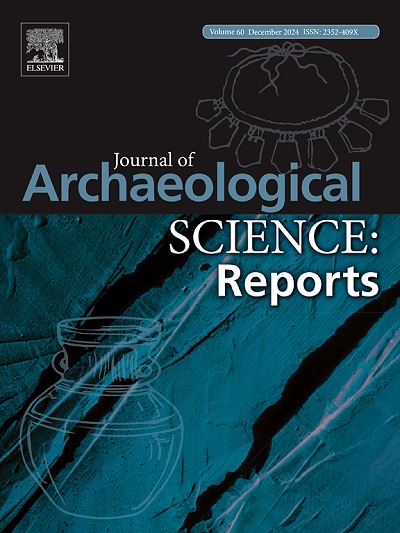埃及亚历山大新发现的托勒密香水花瓶
IF 1.5
2区 历史学
0 ARCHAEOLOGY
引用次数: 0
摘要
香水花瓶,或unguentaria,是在亚历山大墓地中发现的最常见的陶器,可能是因为香水被用于葬礼仪式,或者可能死者在日常生活中使用这些容器,然后与他一起埋葬。埃及古物部最近发现了两座墓地:哈达德墓地和阿布德墓地。El-Haddad墓地的历史可以追溯到公元前3世纪下半叶到公元前2世纪末/ 1世纪初。然而,新发现的El-Abd墓地区域(挖掘季节为2017年至2019年)可以追溯到公元前2世纪下半叶/后期至公元3世纪。在墓室和墓地填充物中发现了大量不同类型的血管;其中相当一部分是在特定的考古层中发现的,或者分为三个阶段:两个阶段来自公元前3世纪下半叶至公元前2世纪中期的El-Haddad墓地,以及公元前2世纪下半叶至公元前1世纪初的El-Abd墓地,此外还有一个阶段来自公元前2世纪末至公元前1世纪末期的El-Abd墓地。从两个墓地中记录到的这些船只,大多数都是用当地的亚历山大泥质织物制成的,它们主要受到希腊化和早期罗马时期东地中海流行的模型的影响。本文旨在追踪这些血管的形状演变,并将这三个阶段中每种类型的数量与其他类型的数量进行比较本文章由计算机程序翻译,如有差异,请以英文原文为准。
Ptolemaic perfume vases from newly discovered cemeteries in Alexandria, Egypt
Perfume vases, or unguentaria, are the most common pottery vessels found in cemeteries in Alexandria, probably because perfume was used in funerary rites, or perhaps the deceased used these vessels during his daily life and then they were buried with him. Two cemeteries were discovered recently by the Egyptian Ministry of Antiquities: the cemetery of El-Haddad and the cemetery of El-Abd. The cemetery of El-Haddad dates back to between the 2nd half of the 3rd century and the late 2nd/early 1st century BCE. However, the newly discovered areas of the cemetery of El-Abd (excavation seasons from the year 2017 to 2019) date back to the 2nd half/late 2nd century BCE to the 3rd century CE. Large numbers of these vessels of different types were found in loculi and in the fill of the cemeteries; a reasonable number of them were found in specific archaeological layers, or in three phases: two phases from the cemetery of El-Haddad dating to the 2nd half of the 3rd to mid-2nd century BCE and the 2nd half of the 2nd to early 1st century BCE, in addition to a later phase from the cemetery of El-Abd dating to the late 2nd to the end of the 1st century BCE. The majority of these vessels, recorded from the two cemeteries, were in local Alexandrian marl fabrics, and they were mainly influenced by the prevalent models in the Eastern Mediterranean during the Hellenistic and early Roman periods. This paper aims to trace the shape evolution of these vessels and compare the numbers of each type with its other counterparts from those three phases.1
求助全文
通过发布文献求助,成功后即可免费获取论文全文。
去求助
来源期刊

Journal of Archaeological Science-Reports
ARCHAEOLOGY-
CiteScore
3.10
自引率
12.50%
发文量
405
期刊介绍:
Journal of Archaeological Science: Reports is aimed at archaeologists and scientists engaged with the application of scientific techniques and methodologies to all areas of archaeology. The journal focuses on the results of the application of scientific methods to archaeological problems and debates. It will provide a forum for reviews and scientific debate of issues in scientific archaeology and their impact in the wider subject. Journal of Archaeological Science: Reports will publish papers of excellent archaeological science, with regional or wider interest. This will include case studies, reviews and short papers where an established scientific technique sheds light on archaeological questions and debates.
 求助内容:
求助内容: 应助结果提醒方式:
应助结果提醒方式:


